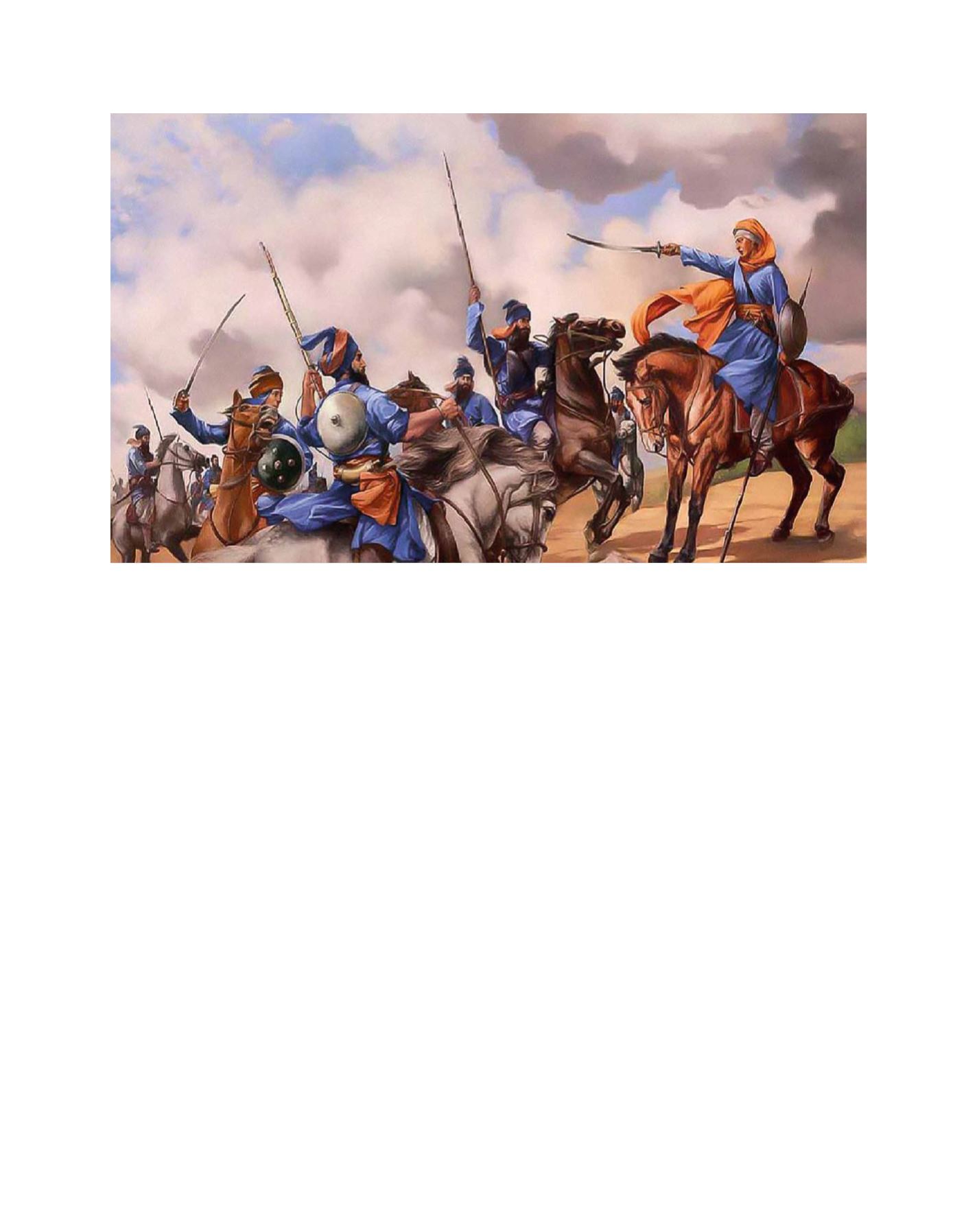

[
] 107
courageously and successfully steered the Sikh commu-
nity for 40 years through turbulent times after the Guru’s
demise. She issued
hukamnamas
(edicts) under her own seal
and authority. Later, during the Sikh confederacies and Sikh
Rule (1716-1849), women proved to be good administrators,
political advisors to the rulers, and rulers themselves.
The community thus raised the self-esteem and confi-
dence of woman. She transformed into a persona and
experienced the belief to be able to perform any feat possi-
ble in the domain of human capabilities. Women began
to venture out with men on equal footing in every human
enterprise. In short, they participated in every sphere, and
in equal measure, towards improving the lot of one and all.
A Sikh woman feels duty-bound to live up to the confidence
that the Gurus have reposed in her.
The experience of women in other parts of the world,
however, was at a variance. It was in the twentieth century,
five centuries later, that they had to protest, organize move-
ments and wage long drawn-out struggles to seek basic
human rights.
While women today have excelled in every field, the ideal
of a dignified existence for them is still wanting. In the
advertising and cosmetics industries, women are portrayed
as mere physical beings, and specific standards of beauty
and fashion are outlined by fashionistas as norms to influ-
ence the gullible populace. However, the Guru’s concepts
of beauty and fashion, delineated centuries ago, put the
modern-day notions to question. According to the Guru,
beauty is an inner quality, and not the narrowing down
to or crowning of ‘Miss Universe’ or ‘Mr Universe’. He
broadened the ambit to include one and all, by promot-
ing that beautiful is one who inculcates virtues; that is to
say, one who adorns oneself with truthfulness, compassion,
contentment and piety. And his pronouncement on the
external appearance is to maintain the body in its natural
form, respecting the sexual dimorphism that nature has
fashioned for humankind. In other words, the Guru expects
his followers to be beautiful within and natural without.
The Guru also makes statement about what criteria to base
one’s attire and food habitude upon: Wear and consume
not what causes pain to the body and/or generates negative
thoughts in the mind.
Sincere efforts of governments to ameliorate the condition
of women, such as introducing social welfare schemes and
legislating for their safety at home and in the workplace,
are the need of the hour and deserve all appreciation. But
without a respectful place in society, woman lacks what it
takes to feel like a worthy human being. The Guru’s approach
is to transform the psyche of both men and women so as to
create an ideal world. While the Guru instils self-confidence
in women, he highlights to men the importance of woman at
every stage of their life. Respect for women had to be inte-
gral to their values. Adultery was prohibited. The Gurus had
planned to take the
panth
to the pinnacles of glory and for
that it was important that people had a strong moral charac-
ter. There was a strict injunction never to overpower a weak
person in need and rather to rescue such a one. Such values
motivated the Sikh warriors to rescue women abducted
as booty in wars, even at risk to their own lives. Even the
women from the opponent’s camp were to be treated with
Mata Bhag Kaur, a Sikh woman warrior, along with Sikh men warriors
Image: Kanwar Singh
G
ender
E
quality
and
W
omen
’
s
E
mpowerment
















